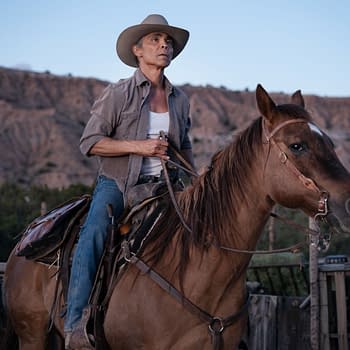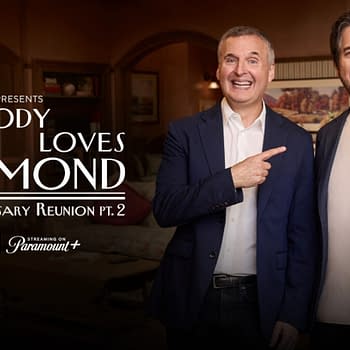Posted in: AEW, Sports, TV | Tagged: AEW Grand Slam Mexico, wrestling
Grand Slam Mexico Delivers Another Triumph for AEW and Pro Wrestling
AEW Grand Slam Mexico showcased cultural respect, diverse wrestling styles, and compelling storytelling that has become a signature of Tony Khan's promotion.
Article Summary
- Grand Slam Mexico showcased AEW's cultural respect and diverse wrestling styles, setting new standards for international events in pro wrestling
- Hangman Page's Spanish opening address en español and MJF's controversial mask removal highlight AEW's understanding of local traditions
- Mercedes Moné captures CMLL World Women's Championship, further strengthening the ties between AEW and CMLL
- Grand Slam Mexico demonstrated AEW's commitment to global expansion and sophisticated long-term storytelling in professional wrestling
All Elite Wrestling (AEW) presented AEW Grand Slam Mexico at the historic Arena México in Mexico City on Wednesday evening, delivering a comprehensive demonstration of the organization's commitment to international expansion, cultural authenticity, and sophisticated long-term narrative construction. The event, which marked a significant milestone in the burgeoning partnership between AEW and Consejo Mundial de Lucha Libre (CMLL), exemplified the fundamental philosophical differences between Tony Khan's progressive wrestling enterprise and its primary competitor, World Wrestling Entertainment (WWE).

The evening commenced with an extraordinary display of cultural sensitivity and linguistic effort from Adam "Hangman" Page, who delivered an emotionally resonant opening address entirely in Spanish. Page's earnest attempt to communicate directly with the Mexican audience—acknowledging his linguistic limitations while demonstrating genuine respect for the local culture—stood in stark contrast to WWE's historically problematic approach of forcing international talent to conform to anglophone expectations. His heartfelt recollection of Mexican agricultural workers who influenced his formative years emphasized themes of dignity, industriousness, and cross-cultural solidarity.
This opening segment of Grand Slam Mexico established the evening's overarching narrative: professional wrestling as a universal language that transcends borders while simultaneously honoring distinct regional traditions. Page's declaration that "todos somos mejores cuando trabajamos juntos" (we are all better when we work together) resonated particularly powerfully given the current sociopolitical climate, wherein the leadership of certain sports entertainment entities have aligned themselves with divisive political administrations that promulgate xenophobic policies.
The fourteen-man tag team extravaganza that followed showcased AEW's commitment to integrating diverse wrestling styles seamlessly. The match featured a spectacular amalgamation of Mexican lucha libre, Japanese strong style, and North American professional wrestling, with performers from various backgrounds collaborating and competing without sacrificing their individual artistic identities. Templario's breathtaking aerial maneuvers, Hechicero's technical wizardry, and Brody King's powerful offense—punctuated by his notable attire featuring an "Abolish ICE" message—demonstrated AEW's willingness to allow performers to express their authentic selves and political convictions.
The confrontation between Mark Briscoe and Continental Champion Kazuchika Okada further illustrated AEW Grand Slam Mexico's sophisticated approach to long-term storytelling. Briscoe's quest for vengeance on behalf of Kenny Omega added layers to an already complex narrative tapestry, building anticipation for future encounters while delivering immediate satisfaction through intense in-ring action.
Perhaps the most emotionally charged moment of Grand Slam Mexico occurred during the encounter between Maxwell Jacob Friedman and lucha libre icon Místico. The passionate rendition of Me Muero by the capacity crowd created an atmosphere of cultural celebration rarely witnessed in mainstream North American wrestling presentations.
The subsequent controversy—including the stars-and-stripes-clad MJF's despicable mask removal—demonstrated AEW's understanding of lucha libre's sacred traditions while generating authentic heat through culturally specific transgressions. In fact, MJF's performance was, according to a report from Fightful's Sean Ross Sapp, so believable that he was attacked later at the hotel by a local fan, a callback to wrestling's heyday where masterful heel performances elicited genuine anger.
The high-flying four-way match for four million pesos exemplified AEW Grand Slam Mexico's commitment to showcasing international talent without homogenization. Hologram, Mascara Dorada, Ricochet, and Lio Rush each maintained their distinctive styles while crafting a cohesive narrative of athletic excellence and competitive determination.
Mercedes Moné's capture of the CMLL World Women's Championship from Zeuxis at Grand Slam Mexico represented another milestone in AEW's respectful treatment of partner organizations' prestigious championships. Unlike competitors who might diminish external titles, AEW presented this championship victory as genuinely significant, enhancing both Moné's credibility and the prestige of the CMLL championship itself. The post-match attack of AEW Women's World Champion Toni Storm, heralded by a film noir video package showing Storm walking through the streets of Mexico City while delivering a hard-boiled monologue, was well-received by the fans in attendance, once again demonstrating the resonance of AEW's top stars across international and cultural borders.
The main event ten-man tag team match crystallized AEW's overarching themes of factional warfare, long-term storytelling, and explosive athletic competition. The controversial conclusion, featuring Jon Moxley's underhanded tactics and Hangman Page's dramatic return, established future narrative directions while providing immediate dramatic satisfaction.
Throughout Grand Slam Mexico, AEW demonstrated its fundamental respect for professional wrestling's global heritage, its performers' individual identities, and its audience's intelligence. This approach stands in marked contrast to homogenizing tendencies that have historically plagued the industry's largest company, which has often required international performers to abandon their cultural identities in favor of manufactured personas designed for mainstream American consumption.
Tony Khan's vision for Grand Slam Mexico—and indeed for All Elite Wrestling as a whole—appears predicated on the belief that professional wrestling achieves its greatest artistic and commercial heights when it embraces diversity, respects tradition, and trusts its audience to appreciate nuanced storytelling. The overwhelming success of Grand Slam Mexico validates this philosophy, suggesting that the future of professional wrestling lies not in historical and cultural erasure but in multicultural celebration.
As All Elite Wrestling continues its global expansion, events like Grand Slam Mexico serve as compelling evidence that alternative approaches to sports entertainment can achieve both critical acclaim and commercial success. The organization's willingness to present wrestling as a serious athletic and artistic endeavor, rather than merely escapist entertainment, positions it as the premier alternative for discerning wrestling enthusiasts worldwide.













